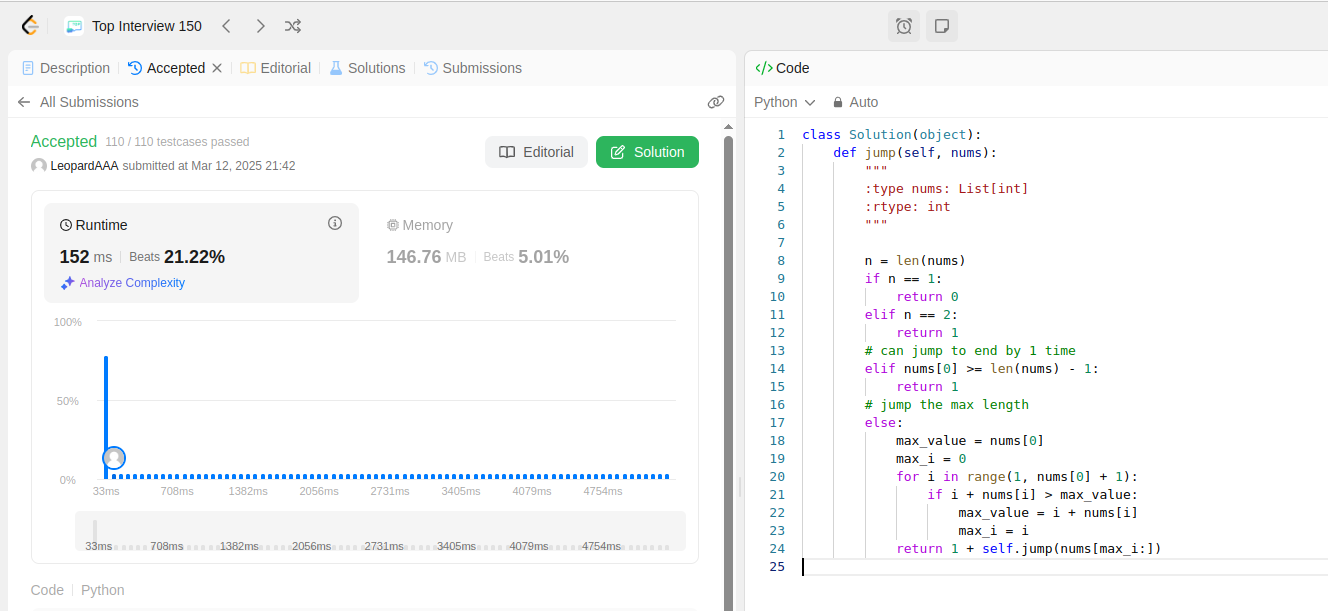You are given a 0-indexed array of integers nums of length n. You are initially positioned at nums[0].
Each element nums[i] represents the maximum length of a forward jump from index i. In other words, if you are at nums[i], you can jump to any nums[i + j] where:
0 <= j <= nums[i]andi + j < n
Return the minimum number of jumps to reach nums[n - 1]. The test cases are generated such that you can reach nums[n - 1].
Example 1:
Input: nums = [2,3,1,1,4] Output: 2 Explanation: The minimum number of jumps to reach the last index is 2. Jump 1 step from index 0 to 1, then 3 steps to the last index.
Example 2:
Input: nums = [2,3,0,1,4] Output: 2
Constraints:
1 <= nums.length <= 1040 <= nums[i] <= 1000- It's guaranteed that you can reach
nums[n - 1].
My solution:
class Solution(object): def jump(self, nums): """ :type nums: List[int] :rtype: int """ n = len(nums) if n == 1: return 0 elif n == 2: return 1 # can jump to end by 1 time elif nums[0] >= len(nums) - 1: return 1 # jump the max length else: max_value = nums[0] max_i = 0 for i in range(1, nums[0] + 1): if i + nums[i] > max_value: max_value = i + nums[i] max_i = i return 1 + self.jump(nums[max_i:])





 浙公网安备 33010602011771号
浙公网安备 33010602011771号